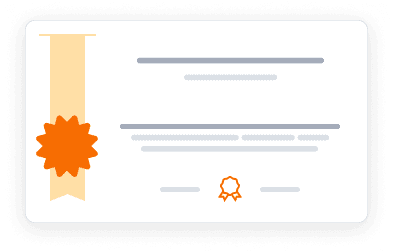This course is part of Data Structures and Algorithms.
This comprehensive course covers advanced data structures and algorithms, focusing on graph algorithms, dynamic programming, and pattern matching. Students implement various algorithms in Java, from text processing techniques like Boyer-Moore and KMP to graph traversal methods including Depth-First and Breadth-First Search. The course explores Dijkstra's shortest path algorithm, minimum spanning trees using Prim's and Kruskal's algorithms, and dynamic programming techniques. With interactive visualizations and practical implementations, students gain deep understanding of algorithm efficiency and real-world applications.
4.8
(5 ratings)
5,593 already enrolled
Instructors:
English
English
What you'll learn
Implement advanced pattern matching algorithms including Boyer-Moore and KMP
Master graph traversal techniques using Depth-First and Breadth-First Search
Apply Dijkstra's algorithm for finding shortest paths in weighted graphs
Develop solutions using dynamic programming techniques
Implement minimum spanning tree algorithms like Prim's and Kruskal's
Analyze algorithm time complexity and performance
Skills you'll gain
This course includes:
PreRecorded video
Graded assignments, Exams
Access on Mobile, Tablet, Desktop
Limited Access access
Shareable certificate
Closed caption
Get a Completion Certificate
Share your certificate with prospective employers and your professional network on LinkedIn.
Created by
Provided by

Top companies offer this course to their employees
Top companies provide this course to enhance their employees' skills, ensuring they excel in handling complex projects and drive organizational success.





There are 5 modules in this course
This advanced course explores sophisticated algorithms and data structures, focusing on practical implementation in Java. The curriculum covers four main areas: pattern matching algorithms for text processing, graph algorithms including traversal and shortest path finding, minimum spanning tree algorithms, and dynamic programming techniques. Students learn through hands-on coding exercises and algorithm visualizations, gaining deep understanding of algorithm efficiency and real-world applications. Special emphasis is placed on time complexity analysis and optimal solution design.
Introduction and Review
Module 1
Pattern Matching Algorithms
Module 2
Introduction to Graph Algorithms
Module 3
Minimum Spanning Trees
Module 4
Dynamic Programming
Module 5
Fee Structure
Individual course purchase is not available - to enroll in this course with a certificate, you need to purchase the complete Professional Certificate Course. For enrollment and detailed fee structure, visit the following: Data Structures and Algorithms
Instructor

4 Courses
A Distinguished Leader in Computer Science Education and Innovation
Mary Hudachek-Buswell serves as Associate Chair and Senior Lecturer in the School of Computing Instruction at Georgia Institute of Technology, where she has established herself as a pioneering educator in computer science. After completing degrees in Mathematics from the University of Mary Washington and Auburn University, followed by an MS and PhD in Computer Science from Georgia State University, she has transformed computing education through innovative teaching approaches. Her expertise spans both traditional and online education, particularly in data structures and algorithms, where she developed an acclaimed online course featuring 117 instructional videos and the innovative csvistool visualization platform. Her teaching excellence has been recognized through numerous accolades, including Georgia Tech's Undergraduate Educator Award (2020), Education Partnership Award (2019), the College of Computing's William D. "Bill" Leahy Jr. Outstanding Instructor Award (2019), and most recently, the prestigious Geoffrey G. Eichholz Faculty Teaching Award. Her research focuses on enhancing computing education through visual aids and adaptive teaching methodologies across synchronous, asynchronous, and real-time instruction formats. She has taught a diverse range of courses including the Junior Design Project Sequence, Data Input and Manipulation, Data Structures & Algorithms, and Computing for Engineers, while consistently innovating in educational technology and student engagement strategies. Beyond teaching, she has made significant contributions to the development of teaching assistant training programs and online learning tools, cementing her position as a transformative figure in computer science education.
Testimonials
Testimonials and success stories are a testament to the quality of this program and its impact on your career and learning journey. Be the first to help others make an informed decision by sharing your review of the course.
Frequently asked questions
Below are some of the most commonly asked questions about this course. We aim to provide clear and concise answers to help you better understand the course content, structure, and any other relevant information. If you have any additional questions or if your question is not listed here, please don't hesitate to reach out to our support team for further assistance.


